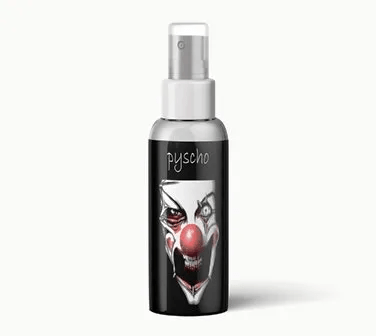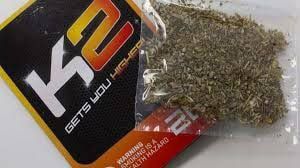Introduction
Incense has been used for centuries across various cultures and religions for its aromatic properties and spiritual significance. Among the many types of incense, alcohol incense is a unique variant that has gained popularity for its distinctive fragrance and potential benefits. This comprehensive guide delves into the fascinating world of alcohol incense, exploring its history, uses, benefits, safety considerations, and more. Whether you’re a seasoned incense enthusiast or new to the concept, this detailed blog post aims to provide you with everything you need to know about alcohol incense.
Table of Contents
Chapter 1: The History of Incense
Ancient Beginnings
The use of incense dates back to ancient civilizations where it played a crucial role in religious rituals and daily life. The Egyptians, Greeks, and Romans all utilized incense for various purposes, from worshipping deities to enhancing personal spaces with pleasant aromas.
Religious Significance
Incense has a long-standing association with religious practices. In many cultures, burning incense is considered a way to purify the air, ward off evil spirits, and connect with the divine. Hinduism, Buddhism, and Christianity are just a few religions that incorporate incense into their rituals.
Evolution and Modern Use
Over the centuries, the use of incense has evolved. While it retains its spiritual and cultural significance, incense is also widely used in modern times for its aromatic and therapeutic properties. The advent of alcohol incense adds another layer to this evolution, offering unique benefits and applications.
Chapter 2: Understanding Alcohol Incense
What is Alcohol Incense?
Alcohol incense is a type of incense that incorporates alcohol as a base or an additive. This inclusion enhances the fragrance and burning properties of the incense. Unlike traditional incense, which relies solely on natural resins, herbs, and oils, alcohol incense benefits from the solvent properties of alcohol to distribute the fragrance more evenly.
Types of Alcohol Used
Various types of alcohol can be used in the production of alcohol incense, including ethanol and isopropyl alcohol. Each type of alcohol brings different characteristics to the incense, affecting the scent, burn rate, and overall experience.
Production Process
The production of alcohol incense involves blending natural or synthetic fragrances with alcohol. This mixture is then applied to a combustible base, such as a bamboo stick or charcoal. The alcohol helps to dissolve and carry the fragrance, ensuring a consistent and long-lasting scent.
Chapter 3: Benefits of Alcohol Incense
Enhanced Fragrance
One of the primary benefits of alcohol incense is its enhanced fragrance. The alcohol acts as a solvent, effectively carrying the aromatic compounds and releasing them evenly when burned. This results in a more potent and pleasant scent compared to traditional incense.
Improved Burn Quality
Alcohol incense tends to burn more evenly and steadily. The inclusion of alcohol helps to control the combustion process, reducing the occurrence of incomplete burns and minimizing smoke production. This makes for a cleaner and more enjoyable incense experience.
Versatility in Scent Profiles
The use of alcohol in incense allows for a wider range of scent profiles. Alcohol can dissolve a variety of aromatic compounds, including those that might not be soluble in oil or water. This versatility means that alcohol incense can offer unique and complex fragrances that are not possible with traditional incense.
Therapeutic Benefits
Like other forms of incense, alcohol incense can have therapeutic benefits. Depending on the fragrance used, it can help to relax the mind, improve focus, or uplift the mood. Aromatherapy practices often incorporate incense for these reasons, and alcohol incense can be an effective tool in such applications.
Chapter 4: Popular Uses of Alcohol Incense
Spiritual and Religious Practices
Alcohol incense is frequently used in spiritual and religious ceremonies. Its enhanced fragrance and consistent burn make it ideal for creating a sacred and serene atmosphere. Whether used in temples, churches, or personal altars, alcohol incense helps to enhance the spiritual experience.
Meditation and Mindfulness
Many people use alcohol incense to aid in meditation and mindfulness practices. The calming and grounding effects of certain fragrances can help to deepen meditation, enhance concentration, and promote a sense of inner peace.
Home Fragrance
Beyond its spiritual and therapeutic uses, alcohol incense is also popular as a home fragrance. It can effectively mask unpleasant odors, freshen up living spaces, and create a welcoming ambiance. The variety of scents available ensures that there is an alcohol incense for every preference.
Special Occasions
Alcohol incense can also be used to enhance special occasions. Whether it’s a festive celebration, a romantic evening, or a quiet gathering with friends, the right incense can add an extra layer of enjoyment and significance to the event.
Chapter 5: Safety Considerations
Proper Ventilation
When burning alcohol incense, it’s important to ensure proper ventilation. This helps to disperse the smoke and reduce the concentration of any potentially harmful substances. Open windows and use fans to maintain good air circulation.
Safe Handling
Always handle alcohol incense with care. Keep it away from flammable materials, and never leave burning incense unattended. Use appropriate holders and burners designed to catch ash and prevent accidental fires.
Health Precautions
While alcohol incense can have therapeutic benefits, it’s important to be mindful of any health considerations. Individuals with respiratory conditions or sensitivities to smoke should use incense cautiously and consult with a healthcare provider if necessary.
Storage
Store alcohol incense in a cool, dry place away from direct sunlight and heat sources. Proper storage helps to preserve the quality and fragrance of the incense, ensuring a longer shelf life.
Chapter 6: Making Your Own Alcohol Incense
Ingredients and Materials
To make your own alcohol incense, you’ll need the following ingredients and materials:
- Base Material: Bamboo sticks, charcoal, or another combustible base.
- Fragrance Oils: Essential oils or synthetic fragrances.
- Alcohol: Ethanol or isopropyl alcohol.
- Binder: Natural resins or gums to help the incense hold its shape.
- Water: To dilute the mixture if necessary.
Step-by-Step Process
- Prepare the Base: Soak the bamboo sticks or charcoal in water to ensure they burn evenly.
- Mix the Fragrance: Combine the fragrance oils with alcohol in a ratio that achieves the desired scent strength.
- Add the Binder: Mix in the binder to create a paste that will hold the fragrance on the base material.
- Apply the Mixture: Dip the base material into the mixture, ensuring it is thoroughly coated.
- Dry the Incense: Allow the coated incense to dry completely in a well-ventilated area.
- Store Properly: Store the finished incense in an airtight container to preserve its fragrance.
Tips for Customizing Your Incense
- Experiment with Scents: Try different combinations of essential oils to create unique and personalized fragrances.
- Adjust the Strength: Modify the ratio of alcohol to fragrance to achieve the desired intensity of scent.
- Add Color: Incorporate natural or synthetic colorants to give your incense a visually appealing look.
Chapter 7: Exploring Different Scents
Floral Scents
Floral scents, such as rose, jasmine, and lavender, are popular choices for alcohol incense. These fragrances are known for their soothing and uplifting properties, making them ideal for relaxation and meditation.
Woody Scents
Woody scents, including sandalwood, cedar, and patchouli, provide a grounding and earthy aroma. These fragrances are often used in spiritual practices and for creating a calming atmosphere.
Citrus Scents
Citrus scents, such as lemon, orange, and bergamot, offer a refreshing and invigorating aroma. These fragrances are great for enhancing focus and promoting a cheerful mood.
Exotic Scents
Exotic scents, like frankincense, myrrh, and amber, bring a sense of mystery and luxury. These fragrances are often used in ceremonial and spiritual contexts to create a sacred space.
Chapter 8: The Cultural Significance of Incense
Asian Cultures
In many Asian cultures, incense plays a vital role in religious and cultural practices. From Buddhist temples in Japan to Hindu rituals in India, incense is used to honor deities, purify spaces, and enhance meditation.
Middle Eastern Traditions
In Middle Eastern traditions, incense has been used for thousands of years. Frankincense and myrrh, two of the most well-known types of incense, have their roots in this region and are still widely used today.
Western Practices
In Western cultures, incense is often associated with religious ceremonies, such as Catholic mass, and the counterculture movements of the 1960s. Today, it is embraced for both its spiritual and aromatic qualities.
Modern Usage
The modern use of incense spans across cultures and religions, reflecting a blend of ancient traditions and contemporary practices. Whether used for spiritual purposes, aromatherapy, or simply to enjoy a pleasant fragrance, incense continues to be a significant part of many people’s lives.
Chapter 9: Buying Alcohol Incense
Where to Buy
Alcohol incense can be found in a variety of places, including specialty stores, online retailers, and markets. Look for reputable sellers who offer high-quality products and provide detailed information about the ingredients and production process.
What to Look For
When buying alcohol incense, consider the following factors:
- Quality of Ingredients: Choose incense made with high-quality, natural ingredients for the best experience.
- Fragrance Profile: Select a fragrance that appeals to your personal preferences and intended use.
- Brand Reputation: Opt for brands that are known for their quality and customer satisfaction.
- Packaging: Look for incense that is well-packaged to preserve its freshness and fragrance.
Price Considerations
The price of alcohol incense can vary widely depending on the quality of the ingredients and the brand. While it may be tempting to opt for cheaper options, investing in high-quality incense can provide a better and more enjoyable experience.
Chapter 10: Alcohol Incense in Aromatherapy
Aromatherapy Basics
Aromatherapy is the practice of using aromatic substances to promote physical and psychological well-being. Incense, including alcohol incense, is a popular tool in aromatherapy for its ability to deliver concentrated fragrances that can influence mood and health.
Benefits of Aromatherapy
Aromatherapy with alcohol incense can offer numerous benefits, including:
- Stress Relief: Certain scents, like lavender and chamomile, are known for their calming effects and can help to reduce stress and anxiety.
- Enhanced Mood: Fragrances like citrus and peppermint can uplift the mood and increase feelings of happiness and energy.
- Improved Focus: Scents like rosemary and eucalyptus can enhance concentration and mental clarity.
- Better Sleep: Using calming fragrances before bedtime can promote relaxation and improve sleep quality.
How to Use Alcohol Incense in Aromatherapy
To incorporate alcohol incense into your aromatherapy routine:
- Choose the Right Fragrance: Select a scent that matches your desired outcome, whether it’s relaxation, focus, or mood enhancement.
- Set the Atmosphere: Create a calm and comfortable environment by dimming the lights and eliminating distractions.
- Burn the Incense: Light the alcohol incense and allow the fragrance to fill the space. Take deep breaths and focus on the scent to maximize its effects.
- Combine with Other Techniques: Enhance the experience by combining incense with other aromatherapy techniques, such as using essential oil diffusers or incorporating massage with aromatic oils.
Chapter 11: DIY Alcohol Incense Projects
Crafting Custom Scents
Creating your own alcohol incense allows you to customize the fragrance and experience. Here are some DIY projects to try:
Floral Bliss Incense
- Ingredients: Rose petals, lavender buds, jasmine oil, ethanol, bamboo sticks.
- Process: Crush the rose petals and lavender buds, mix with jasmine oil and ethanol, coat the bamboo sticks, and let dry.
Citrus Burst Incense
- Ingredients: Lemon zest, orange peel, bergamot oil, isopropyl alcohol, charcoal.
- Process: Combine the lemon zest, orange peel, and bergamot oil with isopropyl alcohol, coat the charcoal, and allow to dry.
Woodland Harmony Incense
- Ingredients: Sandalwood powder, cedar chips, patchouli oil, ethanol, bamboo sticks.
- Process: Blend the sandalwood powder and cedar chips with patchouli oil and ethanol, coat the bamboo sticks, and let dry.
Tips for Successful DIY Projects
- Experiment with Ratios: Adjust the ratios of ingredients to achieve the desired intensity and balance of scent.
- Test Small Batches: Start with small batches to test the fragrance before making larger quantities.
- Keep Notes: Document your recipes and modifications to replicate successful blends and improve future projects.
Chapter 12: The Future of Alcohol Incense
Innovations in Fragrance Technology
As technology advances, the production and quality of alcohol incense are likely to improve. Innovations in fragrance extraction and blending techniques can lead to even more refined and diverse scent profiles.
Sustainable Practices
Sustainability is becoming increasingly important in all industries, including incense production. Future trends may include the use of eco-friendly materials, ethical sourcing of ingredients, and environmentally conscious production methods.
Integration with Wellness Trends
The growing interest in wellness and holistic health may drive the popularity of alcohol incense. As people seek natural and effective ways to enhance their well-being, alcohol incense could become a staple in self-care routines and wellness practices.
Conclusion
Alcohol incense is a unique and versatile addition to the world of aromatic and therapeutic products. Its enhanced fragrance, improved burn quality, and wide range of scent profiles make it a valuable tool for spiritual, therapeutic, and everyday uses. By understanding its history, benefits, and safety considerations, and by exploring DIY projects and future trends, you can fully appreciate and enjoy the many facets of alcohol incense.
Whether you use it for meditation, aromatherapy, or simply to create a pleasant atmosphere, alcohol incense offers a rich and rewarding experience. Embrace the journey into this aromatic world and discover how alcohol incense can enhance your life.




